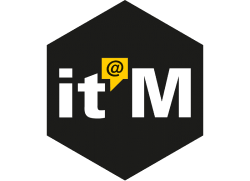






🖥️ Documentation
To check out the documentation, visit vuetifyjs.com.

⚡ Quick Start
Getting started with Vuetify is easy. To create a new project, choose your package manager and run one of the following commands:
Using pnpm
pnpm create vuetify
Using yarn
yarn create vuetify
Using npm
npm create vuetify@latest
Using bun
bun create vuetify
For more information on how to get started, such as using Nuxt or Laravel, check out the official Installation guide.
💖 Supporting Vuetify
Vuetify is a MIT licensed project that is developed and maintained by the Core Team. Sponsor Vuetify and receive some awesome perks and support Open Source Software at the same time! 🎉
What's the difference between GitHub Sponsors and OpenCollective?
Funds donated through GitHub Sponsors directly support John Leider and the ongoing development and maintenance of Vuetify. Funds donated via Open Collective are managed with transparent expenses and will be used for compensating work and expenses for Core team members. Your name/logo will receive proper recognition and exposure by donating on either platform.
Special Sponsor
Diamond Sponsors
Platinum Sponsors
🚀 Introduction
Vuetify is a no design skills required UI Library with beautifully handcrafted Vue Components. No design skills required — everything you need to create amazing applications is at your fingertips. Vuetify has a massive API that supports any use-case. Some highlights include:
- Customizable: Extensive customization options with SASS/SCSS and Default configuration and Blueprints
- Responsive Layout: The default configuration of Vuetify components is responsive, allowing your application to adapt to different screen sizes.
- Theme System: A powerful color system that makes it easy to style your application with a consistent color palette.
- Vite Support: Smaller bundle sizes with automatic tree-shaking
- 6 months Long-term support for Major releases
- Internationalization: 42+ supported languages
Browser Support
Vuetify supports all modern browsers, including Safari 13+ (using polyfills). Components are designed for a minimum width of 320px.
🌎 Vuetify Ecosystem
Resources
| Name | Description |
|---|
|
🕶️ Vuetify Awesome
| Awesome stuff built with Vuetify. |
|
🗑️ Vuetify Bin
| A pastebin for saving code snippets. |
|
🫧 Vuetify Create
| Scaffolding tools for creating new Vuetify projects. |
|
💭 Vuetify Discord
| Our massive and inclusive Discord server where you can ask questions, share feedback, and connect with other Vuetify developers. |
|
🧹 Vuetify ESLint
| An opinionated [ESLint config](https://github.com/vuetifyjs/eslint-config-vuetify) for styling and an [ESLint plugin](https://github.com/vuetifyjs/eslint-plugin-vuetify) for upgrading Vuetify version. |
|
🐛 Vuetify Issues
| A web application for reporting bugs and issues with Vuetify, Documentation, or one of our other packages. |
|
📦 Vuetify Loader
| A monorepo of compiler plugins for autoloading Vuetify components and configuring styles. |
|
🧠 Vuetify MCP
| A Model Context Protocol server for developing with Vuetify and Agents. |
|
🎮 Vuetify Playground
| A Vuetify 3 playground built using vuejs/repl where you can play with our components. |
|
✂️ Vuetify Snips
| Pre-built code snippets for Vuetify components that you can use in your projects |
|
🛒 Vuetify Store
| The official Vuetify Store where you can download free digital products, purchase pre-made themes, and more. |
🙋♂️ Questions
For help and support questions, please use our Discord community. This issue list of this repo is exclusively for bug reports and feature requests.
🐛 Issues
Use our Issue generator to report bugs and request new features.
Please make sure to read the Important Information before opening an issue. Issues not confirming to the guidelines may be closed immediately.
2️⃣ Vuetify 2 Support
Vuetify 2 is now End Of Life (EOL) and is no longer supported, even for security issues. Commercial support for this version is available from our partner, HeroDevs.
📝 Changelog
Detailed changes for each release are documented in the release notes.
💁♂️ Contributing
Developers interested in contributing should read the Code of Conduct and the Contribution Guide.
Please do not ask general questions in an issue. Issues are only to report bugs, suggest
enhancements, or request new features. For general questions and discussions, ask in the community chat.
To help you get you familiar with our contribution process, we have a list of good first issues that contain bugs which have a relatively limited scope. This is a great place to get started. If you have any questions, please join us on the community chat.
We also have a list of help wanted issues that you might want to check.
📑 License
Vuetify is available under the MIT software license.
Copyright (c) 2016-present Vuetify, LLC
This project exists thanks to all the people who contribute 😍!
















